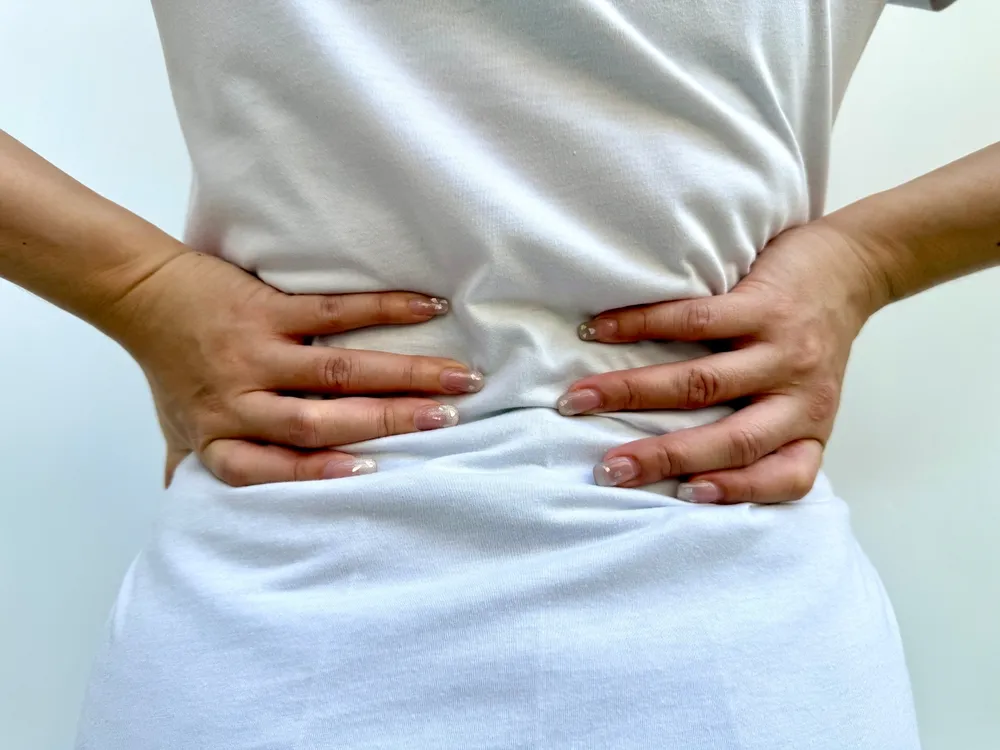Building muscle is often linked to a calorie surplus, where excess energy fuels muscle growth and fat loss. However, can you gain muscle in a calorie deficit? Under the right conditions, body recomposition—gaining muscle while losing fat—is achievable. This requires optimised protein intake, strength training, and proper recovery to retain or even build lean muscle mass while consuming fewer calories.
This guide explores how to balance fat loss and muscle gain, whether a 500-calorie deficit is too much, and how to optimise your training and nutrition for sustainable results.
What is Body Recomposition
Body recomposition refers to the process of losing fat while simultaneously building lean muscle mass. Unlike traditional weight loss or muscle gain approaches, this method focuses on improving body composition—the ratio of fat to muscle in the body—rather than just reducing overall weight.
Achieving body recomposition requires balancing fat loss and muscle growth at the same time. This involves:
- Creating a caloric deficit to promote fat loss
- Consuming enough protein and essential nutrients to support muscle repair and growth
- Following a structured strength training routine to stimulate muscle retention
While being in a calorie deficit means consuming fewer calories than your body needs for maintenance, going too low can hinder muscle recovery. A moderate deficit combined with proper macronutrient distribution (protein, carbohydrates, and fats) ensures effective fat loss while preserving or gaining muscle.
Who Benefits Most from Body Recomposition?
This approach works best for:
- Beginners – Their bodies adapt quickly to training and dietary changes.
- Overweight individuals – Can utilise stored fat for energy while building muscle.
- Returning lifters – Muscle memory helps rebuild muscle even in a deficit.
For muscle growth and fat loss to happen at the same time, caloric intake, protein consumption, and training intensity must be properly balanced.
Can You Gain Muscle in a Calorie Deficit? How Fat Loss and Muscle Growth Happen Simultaneously
Muscle growth requires protein intake, resistance training, and proper recovery, while fat loss occurs when calories burned exceed calories consumed.
The key to achieving both at once is nutrient partitioning—directing calories to muscle maintenance while using stored fat for energy. This process is more effective for:
- Beginners – Their bodies quickly adapt to strength training and diet changes.
- Overweight individuals – Can build muscle while losing fat due to excess stored energy.
- Those returning to training – Muscle memory accelerates muscle regrowth even in a deficit.
By optimising nutrition and training, individuals can gain muscle while shedding fat, proving that the body can rebuild and sustain lean muscle even with reduced calories. This answers the question, can you gain muscle in a calorie deficit? Yes, but only when the right strategies are in place—sufficient protein, progressive resistance training, and controlled energy intake.
Key Factors for Building Muscle in a Caloric Deficit
Successfully gaining muscle while in a caloric deficit requires careful attention to:
- Protein intake – Consuming 1.6–2.2g of protein per kg of body weight supports muscle retention.
- Strength training – Compound movements like squats, deadlifts, and presses stimulate muscle growth.
- Sufficient recovery – Sleep and rest periods are essential for muscle repair.
By balancing training, nutrition, and recovery, muscle growth can occur even when eating fewer calories.
How to Determine Your Ideal Calorie Deficit
Choosing the right caloric deficit depends on body composition and goals:
- 100–300 calories/day – Ideal for lean individuals aiming for slow body recomposition.
- 300–500 calories/day – Best for most individuals balancing fat loss and muscle preservation.
- 500–800 calories/day – Suitable for higher body fat percentages, as stored fat can fuel muscle retention.
Is Losing 1kg a Week Too Much?
A 1kg weight loss per week may be too aggressive for those aiming to preserve muscle mass. A gradual weight loss of 0.5kg per week is more sustainable and ensures you lose fat instead of muscle. If you’re losing more than 1kg per week, you may need to increase your protein intake or slightly reduce your calorie deficit to prevent muscle breakdown.
Is a 500-calorie Deficit Too Much?
A 500-calorie deficit is considered moderate and can still allow muscle retention and even growth, particularly for individuals with higher body fat percentages.
For leaner individuals, a 500-calorie deficit may slow muscle growth and increase the risk of muscle breakdown. To avoid this:
- Prioritise protein intake to maintain muscle mass.
- Limit excessive cardio, which can accelerate muscle loss.
- Follow progressive strength training to stimulate muscle development.
Best Diet & Workout Approaches for Body Recomposition
Dietary Strategies:
- High-protein intake – Essential for muscle repair and retention.
- Healthy fats and complex carbs – Support energy levels and recovery.
- Meal timing – Prioritise post-workout meals to optimise muscle recovery.
Training Strategies
- Strength training (4–5 times per week) – Focus on compound movements to stimulate muscle retention.
- Progressive overload – Gradually increasing weight or reps enhances muscle growth.
- Controlled cardio – Avoid excessive endurance training that may accelerate muscle loss.
For optimal recovery after training, incorporating massage therapy into your routine using an OSIM full-body massager can alleviate muscle fatigue, reduce soreness, and support post-workout relaxation.
By combining proper nutrition, structured training, and effective recovery tools, muscle retention and fat loss can occur simultaneously.
Recovery and Sleep The Role of Rest in Muscle Growth
Many underestimate the importance of recovery and sleep in a caloric deficit. Muscle growth happens during rest periods, not while lifting weights.
Key recovery factors include:
- Sleep Quality – Getting 7–9 hours of sleep is essential for muscle repair, hormone regulation, and stress management. Poor sleep raises cortisol levels, which can hinder fat loss and muscle growth. Investing in relaxation solutions can help improve sleep quality and ease muscle tension.
- Active Recovery – Low-intensity activities like walking, yoga, or stretching improve blood circulation and muscle recovery. Using a leg massager can help relieve muscle fatigue and speed up post-workout recovery.
- Managing Stress – High cortisol levels from stress can increase muscle loss and cause fat retention. Relaxation methods such as meditation, deep breathing, and massage therapy can reduce stress and improve muscle recovery.
- Rest Days & Deloading – Planned rest days prevent overtraining, ensuring long-term muscle retention.
Proper recovery is just as important as training and nutrition for successful body recomposition.
Can You Build Muscle on a 1500-Calorie Deficit?
A 1500-calorie deficit is too aggressive for most individuals aiming to build muscle. While overweight individuals may still gain muscle, a large deficit can:
- Reduce energy levels, impacting training performance.
- Limit protein synthesis, slowing muscle growth.
- Increase muscle breakdown, especially with insufficient protein intake.
A smaller deficit (300–500 calories/day) is more effective for building muscle while losing fat.
Whether Getting Leaner Makes You Look Bigger
Losing fat enhances muscle definition, making muscles appear larger and more prominent without adding size.
- Lower Body Fat – Reveals muscle shape for a more defined look.
- Increased Muscle Density – Compact muscles create a fuller appearance.
- Improved Proportions – Leaner bodies look more symmetrical and muscular.
Achieving this lean, muscular look requires consistent training, proper nutrition, and a moderate calorie deficit.
How to Tell If You’re Gaining Muscle While Losing Fat
Since fat loss and muscle gain happen simultaneously, the scale may not reflect progress. Instead, look for these signs:
- Increased Strength – Lifting heavier weights or performing more reps.
- More Defined Physique – A leaner, more sculpted look, especially in the arms and legs.
- Stable or Slightly Higher Weight – If measurements shrink, muscle is replacing fat.
- Denser, Firmer Muscles – Muscles feel harder and fuller, especially with proper hydration and nutrition.
Tracking strength improvements, body measurements, and visual changes provides a clearer picture of progress than the scale alone.
Gaining Muscle While Losing Weight
Some individuals gain muscle while losing fat more efficiently:
- Beginners & Overweight Individuals – Their bodies adapt quickly, using stored fat for energy.
- Experienced Lifters – Strategic protein intake and progressive overload maintain muscle.
- Returning to Training – Those with muscle memory rebuild lost muscle efficiently.
By focusing on strength training, nutrition, and recovery, muscle growth and fat loss are possible together.
How to Know If Body Recomposition Is Working?
If body recomposition is successful, you will notice:
- Increased Strength – You can lift heavier or complete more reps.
- More Muscle Definition – Your muscles look leaner and more sculpted.
- Stable or Slightly Higher Weight – Body measurements decrease, even if weight remains the same.
- Denser, Firmer Muscles – Your muscles feel harder and fuller with proper hydration and nutrition.
Where Do You Lose Weight First?
Where fat loss occurs first varies from person to person, as it depends on genetics, hormones, and body composition. Generally:
- Men tend to lose fat first in the abdomen and last in the legs and arms.
- Women often lose fat first in the face, arms, and upper body, while the hips, thighs, and lower belly take longer.

Achieving Muscle Growth and Fat Loss Through Body Recomposition
So, can you gain muscle in a calorie deficit? The answer is yes, but it requires strategic planning and consistency. By maintaining a moderate deficit, prioritising high-protein intake, following a progressive strength training routine, and ensuring adequate recovery, you can successfully lose fat while preserving or even building muscle.
Body recomposition is most effective for beginners, overweight individuals, and those returning to training, but with the right approach, anyone can achieve it. While the process takes time and patience, tracking muscle strength, definition, and body composition changes will help you measure progress beyond just the number on the scale.
If your goal is to burn fat while gaining lean muscle, focus on nutrient-dense foods, resistance training, and proper rest. Effective recovery plays a crucial role in muscle repair and growth, and incorporating relaxation and recovery tools can enhance your results.
Support your muscle recovery, improve circulation, and relieve post-workout soreness with OSIM UK’s premium massage chairs and massagers. Whether it’s a full-body massage chair, foot massager, or leg massager, OSIM helps reduce stress, enhance relaxation, and optimise muscle recovery—helping you stay on track with your body recomposition journey.




